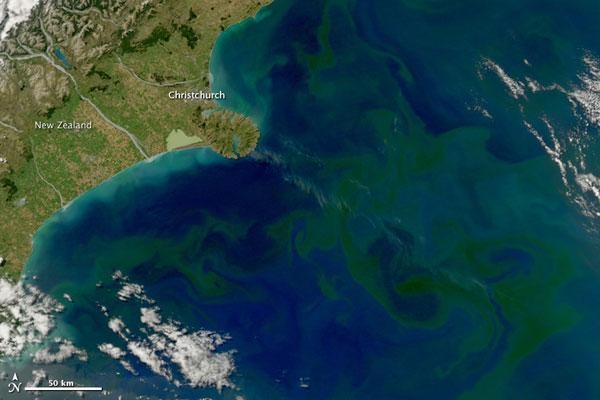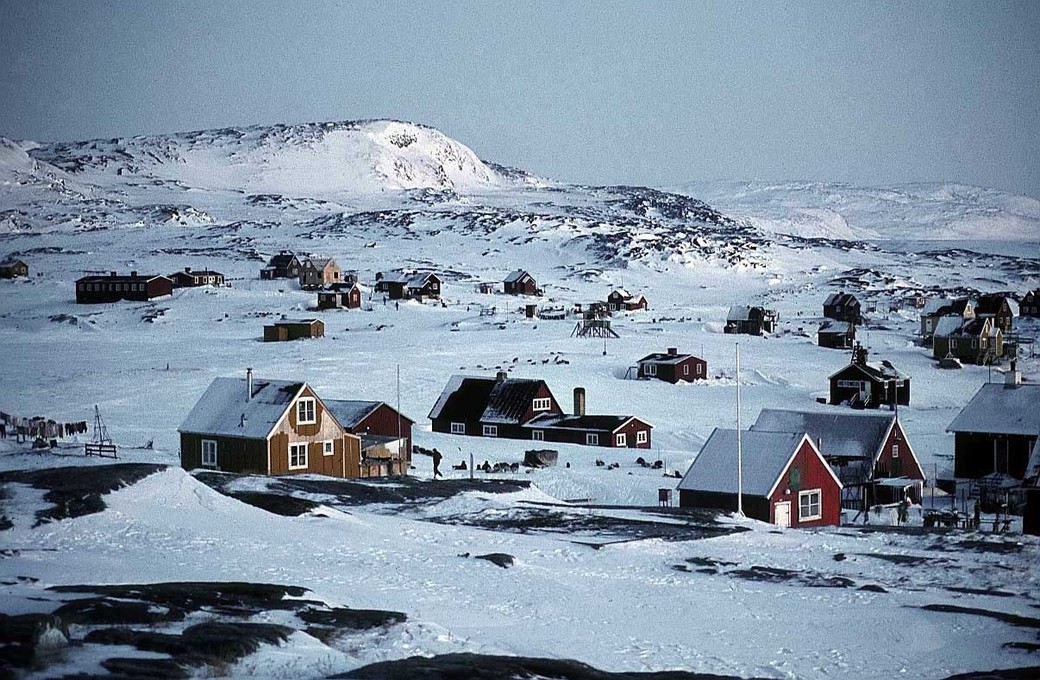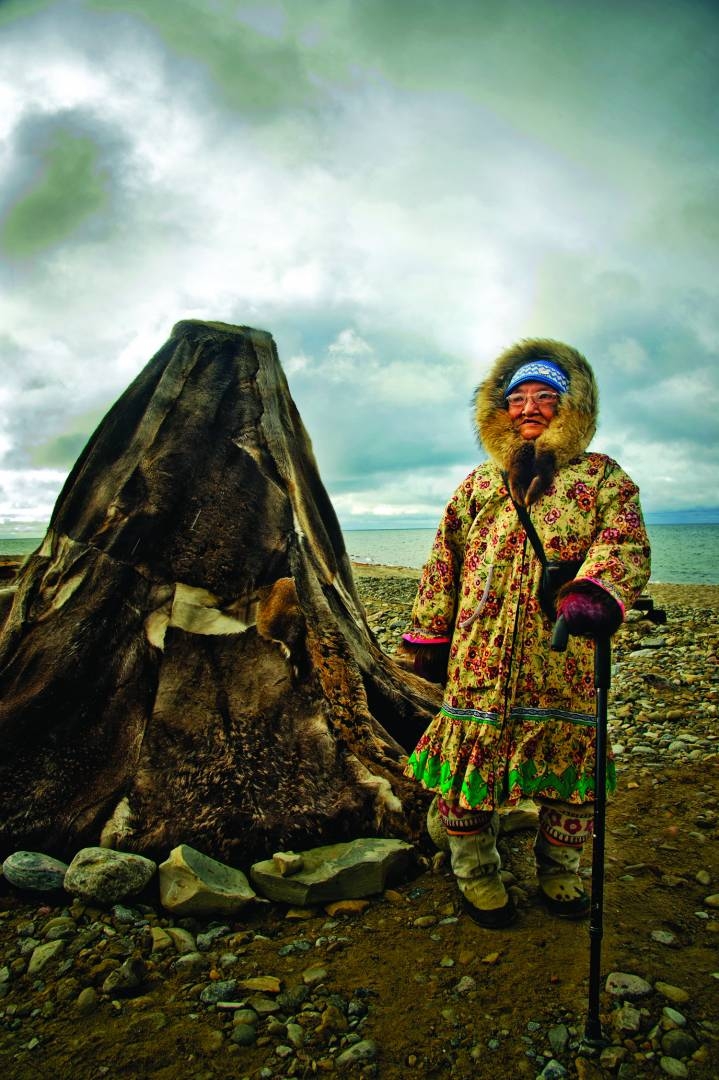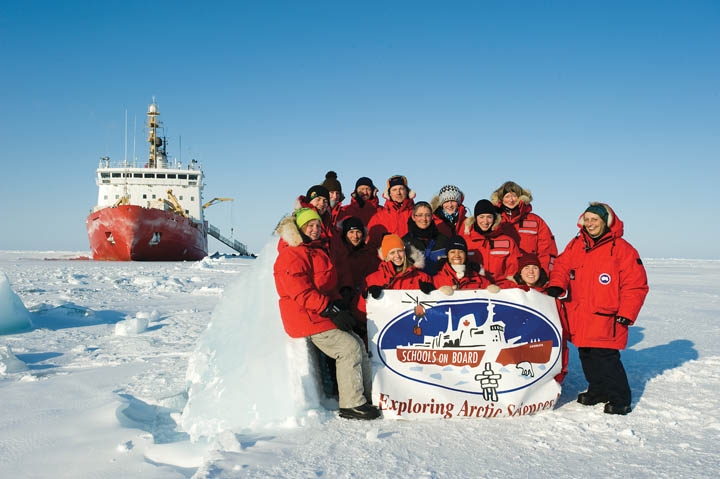
Learning from Phytoplankton
The Arctic, to paraphrase Star Trek, is Canada’s final frontier. It is vast, mysterious and often dangerous and oceanographer Dr. Marcel Babin has set his sights on the region. Babin and his team at the Université Laval are interested in understanding Arctic ecosystems including its tiniest inhabitants – phytoplankton and zooplankton. They are looking at how the Arctic’s microscopic marine plants and animals react to climate change. Babin says that how they respond to warming Arctic seas says a lot about the future of animals further up the food chain – from belugas, polar bears to even humans. And this information is essential to managing Canada’s Arctic resources.
Dr. Babin’s team will achieve its mission thanks in part, to a government grant under the Canada Excellence Research Chairs (CERC) program. CERC provides funding to Canada’s universities to pursue research programs that “promote Canada as a world leader in research and innovation.” To this end, CERC has contributed $10 million to the seven year Arctic program, Remote Sensing of Canada’s New Arctic Frontier. Additional funds are coming from the Government of Quebec, Université Laval, various groups related to Université Laval and an international collaboration with CNRS (Centre National de la Recherche Scientifique) in France. Under the project, Laval and the CNRS have partnered to create the Joint Internal ULaval-CNRS laboratory called Takuvik located at Laval in Quebec City. Costs for the project are divided up between Takuvik and the CERC. Over 50 undergraduate students and scientists from Canada and France will work on the project.
“The project is important because the Arctic is changing more quickly than anywhere else because of climate change,” said Dr. Babin. “The pressure on the Arctic is increasing and it will keep on increasing. There is a growing interest in exploiting resources in the Arctic and we need research to be able to answer questions by stakeholders, politicians and others.”
Getting those answers involves phytoplankton and zooplankton. Babin’s

team is collecting the microscopic creatures and putting them under temperature, light and nutrient stresses. In doing so, Babin hopes to replicate the effects of climate change on the tiny creatures and plants by studying their reaction under laboratory conditions. Experiments in the laboratory will allow the development of mathematical models. “By combining biological ocean circulation and climate models, the program will be able to predict how Arctic marine ecosystems as a whole will respond to climate change, and more specifically to a decrease in sea ice and salinity, and an increase in water temperate.” explains Dr. Babin.
The team is also able to measure how the pace at which climate change is proceeding by examining how much inorganic carbon phytoplankton is absorbing. Inorganic carbon is carbon released into the atomosphere due to the burning of fossil fuels. This carbon is normally reabsorbed by the ocean. However, as ocean temperatures rise, the ability of the ocean to absorb inorganic carbon decreases. Therefore, the capacity of phytoplankton to absorb inorganic carbon is a strong indicator of climate change. Information gleaned from Dr. Babin’s laboratory tests will provide clues as to what the Arctic’s marine ecosystem might look like as climate change occurs. Phytoplankton and zooplankton will be collected thorough water sampling. However, getting up close and personal with microscopic organisms is only part of the research project. Satellite remote sensing and the use of autonomous devises such as sea gliders are also important to Dr. Babin’s research.
For example, the sea glider technology consists of underwater probes that glide across long distances and at deep depths. The gliders can go as deep as a thousand metres underwater and go as far as a single crossing of the Atlantic Ocean. As they do so, they collect valuable data on the marine ecosystem at different depths. A glider can collect information over a 2-4 week time period.
Early research by Dr. Babin shows climate change already has an impact on the Arctic’s marine ecosystem. Although the CERC project officially started in April 2010, early studies are telling. In 2009, Dr. Babin was part of an expedition to the Beaufort Sea on board the CCGS Amundsen – Canada’s only Arctic research icebreaker. The research was conducted in association with ArcticNet, a Network of Centres of Excellence of Canada that brings together the Government, the private sector, and over 30 Canadian universities and international research teams to study the impact of climate change in the coastal Canadian Arctic. “The results indicated that the production of phytoplankton has increases over the last decade,” explained Dr. Babin. “This is mostly because the ice pack is shrinking in summer, which allows more light to penetrate the water column promoting algae growth.” Another telling sign of climate change is the spring bloom. This refers to an increase in algae during warm spring temperatures. The spring bloom is occurring earlier as spring-like temperatures occur earlier in the year. Results from the Amundsen expedition will be published later this year.
More explorations of the Arctic will take place in the coming months. This summer, Dr. Babin will join an ArcticNet expedition setting off from Quebec City to the Beaufort Sea to collect water samples at different water depths. These samples will be tested both on board and at the Université Laval laboratories.
But what does all of this mean? The implications of Dr. Babin’s study are far reaching. Getting a handle on how organisms at the lowest level of the food chain reaction to climate change means scientific deductions can be made to the Arctic ecosystem as a whole through modeling exercises. A basic vision of the marine food web is that Phytoplankton is food for zooplankton is food for large marine animals from small fish to the largest whales. Knowledge gained by Dr. Babin’s studies could be used to predict future fish stocks, seals and other natural Arctic resources. The information also points to the ability of the Arctic to withstand man-made disaster such as the explosion of the BP oil rig in the Gulf of Mexico – and how to best clean up afterwards.
“We need to know what is living in the Arctic, how sensitive it is to environmental factors and how it could react in future to other factors in the environment.” says Dr. Babin. “We will all be in a better position to make decisions about the management in the Arctic once we have more information.








